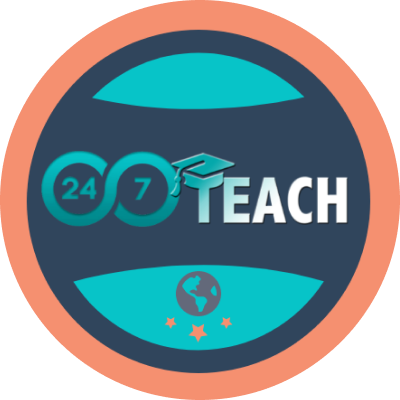10 Essential Tips on Paying for College: Making the Dream Possible
By: Chris Jonas
24/7 College Admissions Coach
Prefer to listen to this post? Click below.
Making College Affordable: A Comprehensive Guide to Financing Your Higher Education:
Pursuing higher education is an exciting journey filled with dreams, aspirations, and promising opportunities. But let's face it, the price tag attached to this pursuit can often cast a shadow on the academic rainbow. It's not just about getting admitted to a dream college but also about being able to afford it.
This post aims to demystify the complexities around financing a college education. Here are some essential tips to navigate college costs and make your dreams a feasible reality.
Understanding the Cost of Attendance (COA):
Before you start worrying about paying for college, it's crucial to understand the full extent of the costs involved. The Cost of Attendance (COA) is more than just tuition fees. It includes room and board, books, supplies, transportation, and personal expenses. Each college should provide a detailed COA breakdown, so check their websites or contact the admissions office directly. Understanding the COA is your first step to planning how to cover these costs.
Scholarships and Grants: Free Money First:
Scholarships and grants are often called 'gift aid' because they are free money—financial aid that doesn't have to be repaid. They are available from various sources, including federal and state governments, colleges, and private organizations. Scholarships are usually merit-based, while grants are typically need-based. Apply for as many as you can. Remember, every little bit helps.
Work-Study Programs: Earning While Learning:
Federal Work-Study provides part-time jobs for undergraduate and graduate students with financial needs, allowing them to earn money to help pay for their education. The program encourages community service work and work related to the student's course of study. Not only does it help with college costs, but it also gives students valuable work experience.
Student Loans: Borrow Responsibly:
Student loans should be your last resort, but they are viable if you've exhausted all other resources. Federal loans often offer lower interest rates and more flexible repayment options than private loans. Always remember to borrow only what you need and keep track of your total indebtedness. Remember, loans must be repaid with interest.
Consider Community Colleges or In-State Public Universities:
Community colleges or in-state public universities can be significantly cheaper than private institutions or out-of-state schools. Many students choose to start at a community college and then transfer to a four-year institution, which can save a substantial amount of money. Alternatively, many in-state public universities offer excellent education and have the added benefit of in-state tuition rates.
6. Take Advantage of Tax Benefits for Education:
Another crucial aspect that can help ease the financial burden of college is understanding and utilizing the tax benefits associated with education. The American Opportunity Tax Credit (AOTC) and the Lifetime Learning Credit are examples. The AOTC provides a credit of up to $2,500 per student for the first four years of higher education, while the Lifetime Learning Credit offers up to $2,000 per tax return for any college-level or courses to acquire or improve job skills. Consult with a tax professional or research to understand how these credits apply to your situation.
7. Plan with 529 Plans or Education Savings Accounts:
Planning for college costs should start long before the first tuition bill arrives. 529 Plans or Education Savings Accounts (ESA) are excellent tools. These are tax-advantaged savings accounts designed to encourage saving for future education costs. The money invested grows tax-free, and withdrawals for qualified education expenses are also tax-free. Starting these savings early can give your funds time to grow and significantly offset college costs.
8. Leverage Online Learning:
Online learning has become a vital part of the education landscape in the digital age. Many universities now offer online degrees or certificate programs that are often cheaper than traditional on-campus options. Not only can this help reduce tuition costs, but it can also cut down on other expenses like housing and transportation.
9. Don't Dismiss Part-Time College or Delayed Enrollment:
While finishing college in the traditional four-year time frame may be enticing, it's not the only path. Part-time college or delayed enrollment are viable options allowing students to work and save money towards their education. This approach may extend the overall time to graduation but can significantly reduce the accumulated debt.
10. Seek Advice from Financial Aid Counselors:
Navigating the labyrinth of college costs and financial aid options can be overwhelming. That's where financial aid counselors come in. These professionals can provide valuable insights into the process of financial assistance, scholarship opportunities, and more. They can guide you through your unique financial circumstances and help you develop a personalized plan to finance your education.
Conclusion:
In conclusion, remember that the process of paying for college is a journey that requires foresight, planning, and continued effort. Many resources are available, from scholarships and grants to work-study programs and tax benefits. By taking the time to understand and leverage these resources, you can make the most of your financial opportunities and make your college dreams come true.
Navigating the journey to and through college is not just about academic preparedness but financial readiness. The true victory lies not only in getting admitted to the college of your dreams but in paving a financially sound path to get there and beyond. Your future self will thank you!
Note: Always stay updated on changes in financial aid policies. For instance, recent federal financial aid reforms introduced significant changes to the Free Application for Federal Student Aid (FAFSA), such as making the form shorter and simpler to fill out, expanding Pell Grant eligibility, and changing how the Expected Family Contribution is calculated and renamed to the "Student Aid Index"1. Other changes include adjusting financial aid eligibility during periods of a national emergency like unemployment due to the Covid-19 crisis and eliminating lifetime limits on federal direct subsidized loans1.
These changes can make a significant difference in making college more affordable, so keep an eye on such updates and adjust your college financial plan accordingly. Remember, the path to your dream college must not be paved with financial stress. With careful planning and informed decisions, you can make the dream of higher education an economic reality.
Did you know the earlier you start the college application process, the easier it is? If you are ready to start thinking about the college application process, set up a free strategy call with one of our 24/7 College Admissions specialists and learn everything you need to create a successful college application plan for yourself or your teen.












